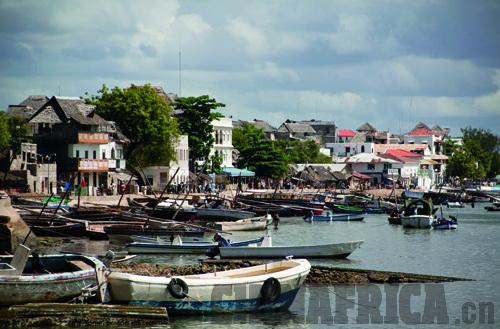|
 |
|
PORT POWER: Sleepy Lamu is set to become a major regional transport hub |
East Africa is gearing up to construct a trade lifeline that is set to be one of the largest transport projects in Africa. In early February, Kenya, Ethiopia and South Sudan launched construction of a new port and oil refinery situated at Kenya's southeastern coastal town of Lamu.
The total construction, estimated to cost $24 billion, will include an oil pipeline, a railway line, airports, resort cities and a highway to link Lamu, Isiolo at the center of Kenya and Juba in South Sudan. A separate link will branch off from Isiolo to Addis Ababa, the capital of Ethiopia, providing the first opportunity for landlocked South Sudan and Ethiopia to have direct access to a seaport.
The project will address decades-old logistical and infrastructural challenges that have hindered the region.
Kenya's President Mwai Kibaki, Ethiopian head of state Meles Zenawi and South Sudan's President Salva Kiir were all present at the launch that followed months of negotiations on the possibility of jointly financing the construction.
"I have no doubt that this day will go down in history as one of the defining moments - when we made a major stride to connect our people to the many socio-economic opportunities that lie ahead," said Kibaki.
Echoing Kibaki's sentiments, Kiir said the project will bring new ventures for people of the three countries and beyond and create economic opportunities, employment and enhance regional stability.
Trade escalation
There were initial threats by locals not to support the project, arguing that the cultural heritage of the coastal town would be ruined.
Lamu Old Town, some 350 km north of Mombasa, is currently a UNESCO heritage site, having the best-preserved example of Swahili settlement in East Africa. The island town is also famous for its narrow streets to the extent that a local provincial administrator is the only person with a vehicle there.
But the Kenyan Government says the port project area does not encroach on the heritage sites, and that it would continue pitching the project to the locals.
The project, also referred to as Lamu Port South Sudan Ethiopia Transport Corridor (Lapsset), should be completed within four years. The three governments involved would foot the initial costs but are also working hard on attracting international investors.
"We don't want to be pessimistic about this project. We very well know that the costs are enormous, but we will pool our resources to the end. We are also banking on our partners," said Sylvester Kasuku, an economic secretary in the Kenyan Prime Minister's Office.
The proposed port will have 32 berths, making it nearly five times larger than Kenya's only port on the Indian Ocean in Mombasa which is currently overwhelmed serving transit goods to Uganda, South Sudan, Rwanda, Burundi and even the Democratic Republic of Congo.
All the projects facilities are likely to be fully functional by 2030, the year that most countries in the region have identified they will have reached middle-income status. The move to construct these facilities might have been influenced by the findings of a feasibility study by a Japanese company commissioned by the Kenyan Government in 2010.
A report titled Lapsset Corridor and New Lamu Port Feasibility Study and Master Plans Report by the Japan Port Consultants (JPC) showed that traffic demands of freight in the area under investigation would rise to 13.5 million tons by 2020 and then to 23.9 million tons by 2030, "which is larger than that of present Mombasa port" if the Lamu port is constructed.
The railway, the report observed, would carry almost 96 percent of the cargo headed to South Sudan and 93 percent of that headed to Ethiopia. This would exclude crude oil before 2030. The railway would carry most of the long-hauling cargo movement between Lamu and South Sudan and Ethiopia.
|